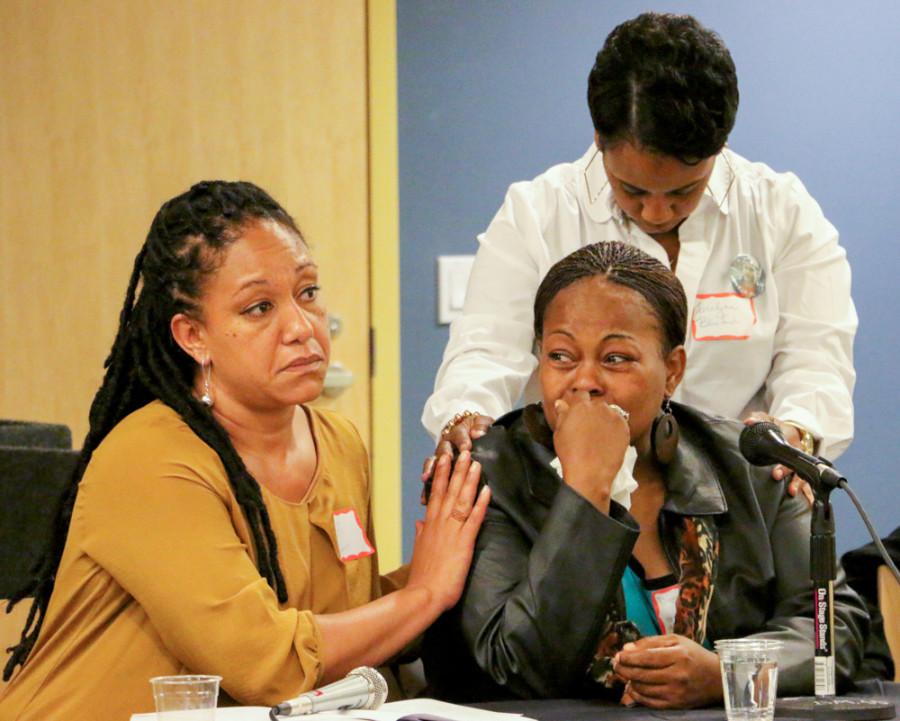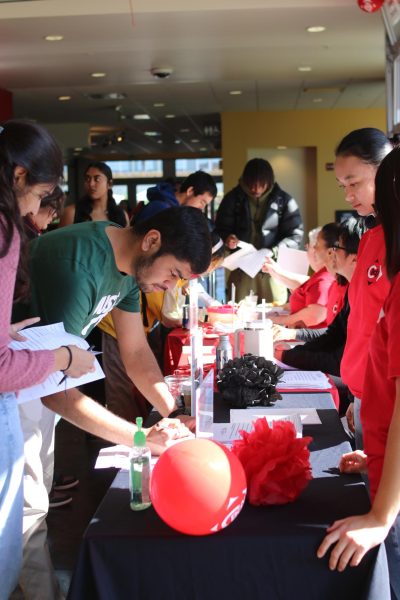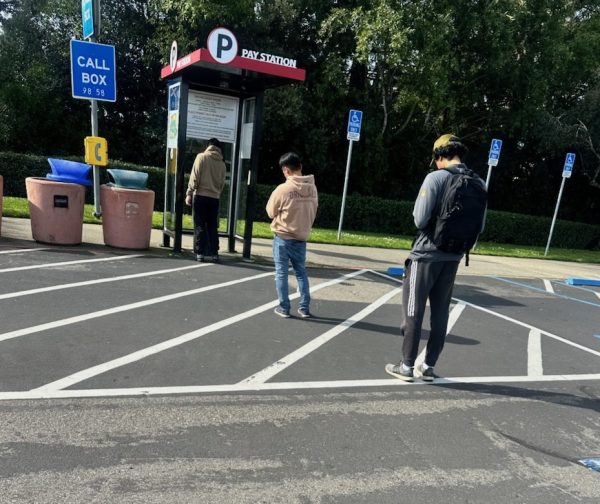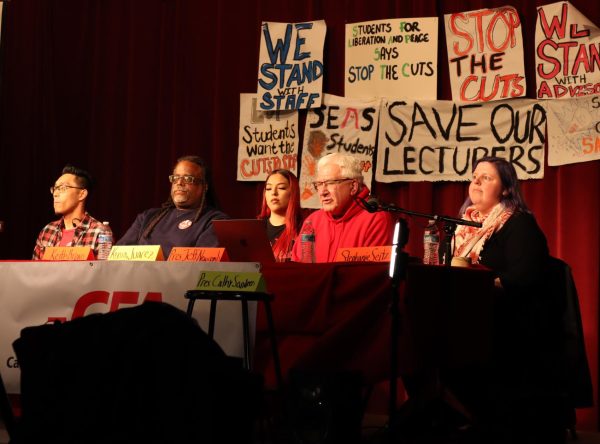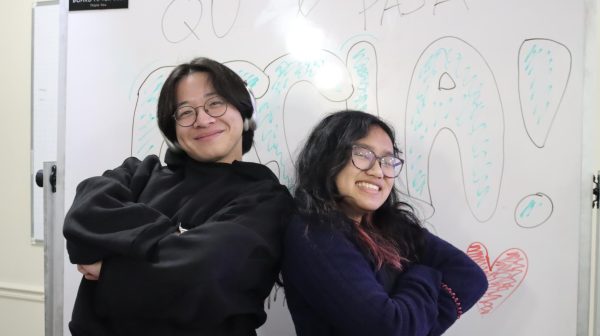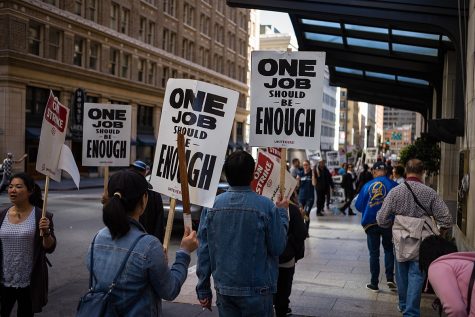#BlackLivesMatter: More than just a hashtag
PHOTO BY KRIS STEWART/THE PIONEER
Onyx Organizating Committee co-chair Cat Brooks and mother of Alan Blueford, Jeralynn Blueford comfort mother of James Rivera, Dionne Smith Downs.
Whether it was a punishment, or a mundane chore, it can easily be assumed that most people with a childhood have been faced with the daunting task of cleaning a room that was so overwhelmingly messy or unorganized they did not know where to begin. Most parents would say, “Pick a corner and start there.” #BlackLivesMatter has taken the nation by storm. Sprung out from the mess of social injustice, in order to dissect this movement and understand it’s meaning you have to pick a spot in history and start there.
On Friday afternoon at Cal State East Bay’s Hayward campus, the communications department, organized by the Graduate Communication Society, CSUEB and the Master of Arts in Communication department, held a day long event consisting of various panels to discuss different aspects of the social phenomenon, #BlackLivesMatter. For a matter so integral to civil rights and social justice in the 21st century, discussion seems like a great corner to begin.
#BlackLivesMatter is not just a popular hashtag on social media. It is such a broad, revolutionary movement in today’s society; it can be hard to pinpoint where to start.
According to blacklivesmatter.com the movement was started after the 2012 acquittal of George Zimmerman, 17-year-old Trayvon Martin’s killer. This movement symbolizes the rebellion of the black community against a criminal justice system that continues dehumanize and devalue the lives of people of color.
Despite running behind schedule for most of the event, due to technical difficulties prior to the start of the conference, panel chair and communications graduate student Ryan Wallace managed to gracefully keep the flow going by gently reminding speakers of time constraints.
Participants in the masters of communication program and members of GCS are responsible for putting together programs that are based in communication theory and research. Graduate student Sarah Ostrom said the event took a year to put together. Even with careful planning the keynote speaker, Dr. Andreana Clay was asked to step in on short notice.
Three separate panels of graduate students made up the majority of the conference. Panelists presented their research paper on topics that stem from the #BlackLivesMatter movement. Professors from the communication department at CSUEB were given time to briefly respond and provide feedback at the end of each panel. The panels not only serve as a platform to provoke thought and awareness within the student body and community, but they allow the opportunity for graduate students to become familiar with research paper presentation.
The first panel was centered on research papers covering online activism and was responded to by Dr. William Lawson.
Panel two was on identity and race in the 21st century and Dr. Lonny Brooks had the task of responding to the panelists.
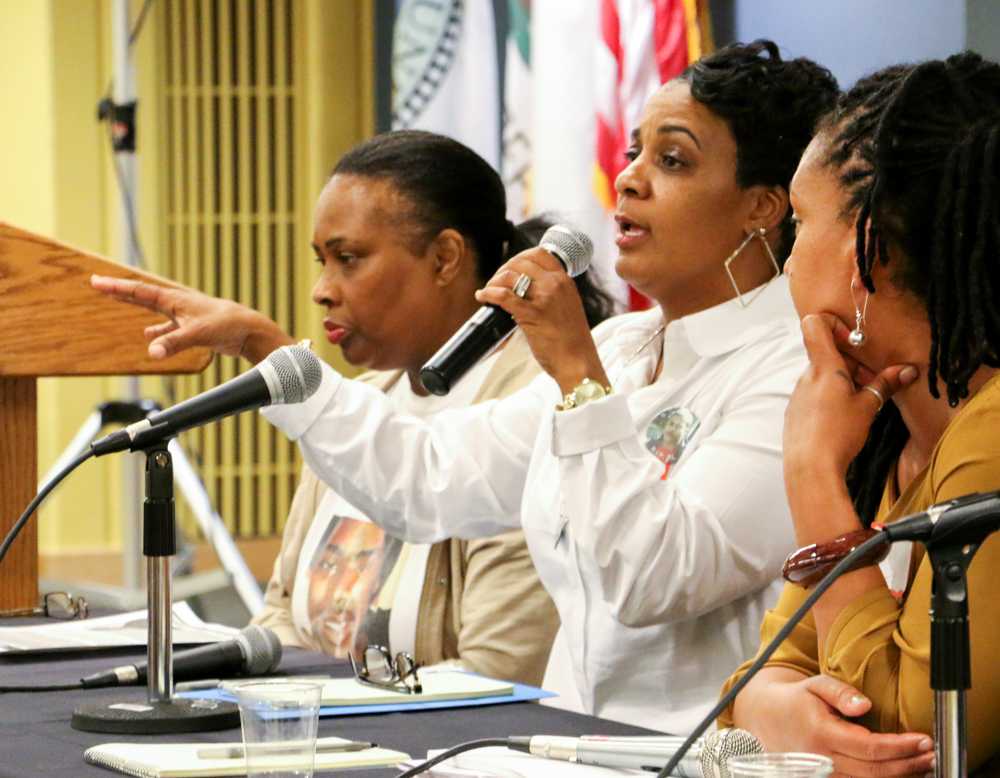
Finally the third panel was on feminism and gender activism in the hashtag and Dr. Katherine Bell was respondent. Due to the late start of the event, there was not much time for an open forum of questions after each panel.
The 4 p.m. spotlight session, Families Seeking Justice, which began after a brief lunch provided to all attendees and panelists, was live streamed by Pioneer WebTV from 4 p.m. to 6 p.m. This panel was designed to give a platform to the families of victims that are still fighting for justice for their fallen loved ones.
Panelists included Oscar Grant’s mother, Wanda Johnson, Alan Blueford’s mother, Jeralynn Blueford, James Rivera’s mother, Dionne Smith Downs and Oscar Grant’s uncle, Cephus “Uncle Bobby” Johnson. Moderating the panel was Cat Brooks, co-chair of the Onyx Organizing Committee, dedicated to raising awareness. She helped field some of the discussion that came from topics presented in earlier panels.
The air was thick with emotion throughout the spotlight session while mothers spoke of the loss of their children as a result of violence from a system that is supposed to protect and serve. Johnson said “the criminal justice system is racist to the core,” and a radical change needs to be made in our nation.

During the question and answer portion of the session a young African American woman stood up to comment. She mentioned being in fear for her teenaged brother’s life because of the statistics facing young Black men in regards to police brutality. She asked what she could do to help. Whether it was to provide groceries to the families or volunteer, she pleaded with the panelists to allow them to help her ease their pain. Brooks had each panelist give contact information and explain committees and foundations they are actively involved in.
Throughout the day, roughly 120 students, faculty, staff and community members attended the event. The bodies that filled the seats began to trickle after each panel was over. Following the spotlight session, the event was concluded with a keynote speech.

An active participator in protests and other events, keynote speaker Dr. Andreana Clay was not just a Ph.D. behind a podium. She spoke particularly about the importance of love to start the healing process for grieving families and communities. The families that were part of the Seeking Justice panel remained in the audience for the talk and Clay seemed to speak directly to them when she said, “Loss is something that is felt through time and it is hard to categorize.”
The event concluded with dinner provided for all and the chance to continue discussion and network with those that stayed.


